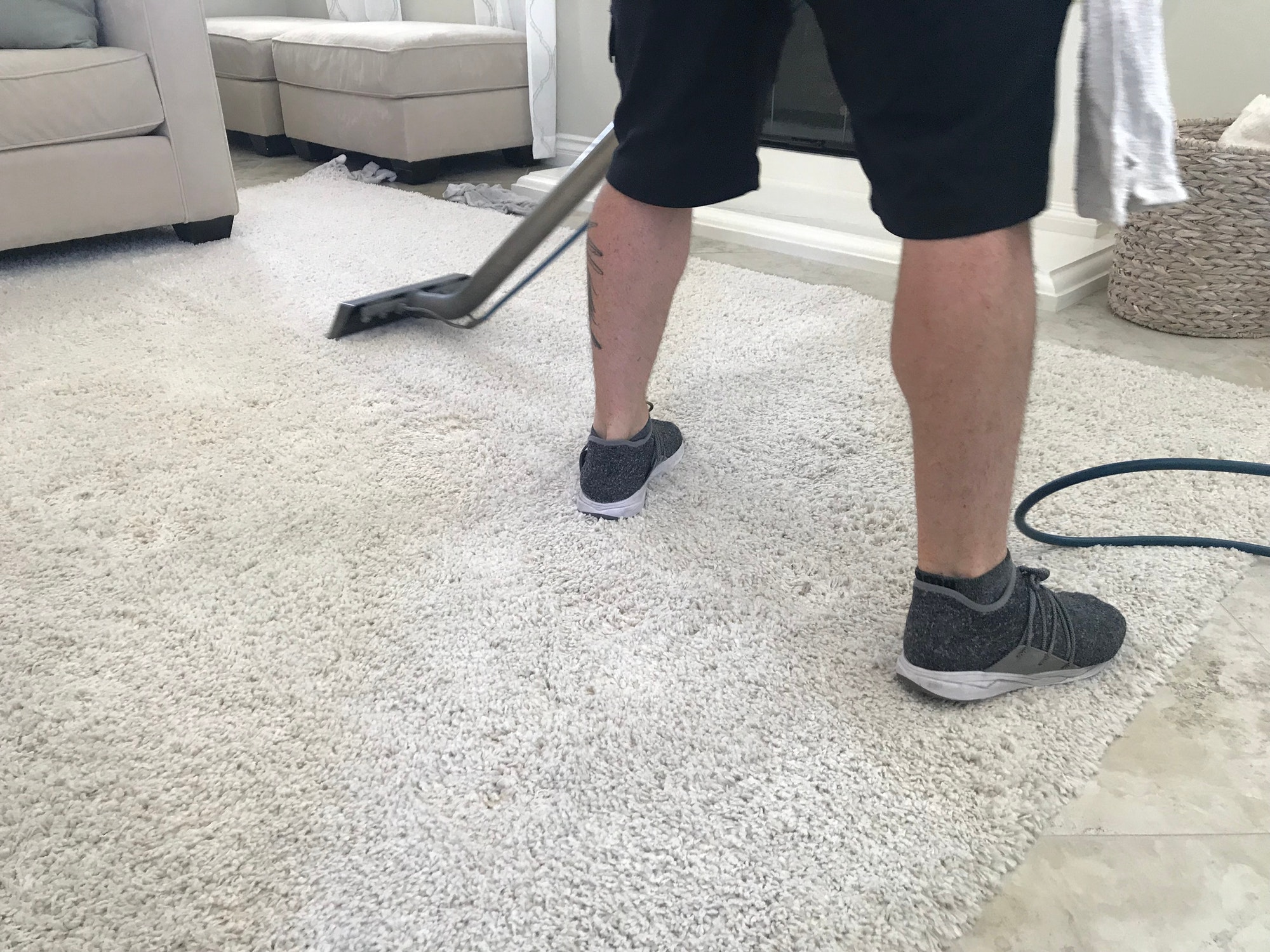The soil that accumulates on your carpet is a byproduct of airborne pollutants. Your carpet collects these pollutants through the cracks between the baseboard and drapes, and under closed doors. These pollutants include smoke from candles and soot from dirty ducts. They can also include airborne pollutants from outdoors, including smog and auto emissions.
Oily soils
The main reason for this type of carpet filtration is that the airborne contaminants are trapped in the carpet fibers, causing them to become discolored. To prevent this, ensure that the humidity in your home is below 50%. You can use a hygrometer to measure this value.

Oily soils tend to stick to the fibers and form an electrical bond. This bond attracts more dry soil, which then becomes trapped within the carpet. The process of carpet filtration is usually more severe in rooms with poor ventilation. When air flows in from outside, it seeks out drafts and exit areas. Most of the oily soils found in carpets are oily and may originate from a furnace, fireplace, or other oil-based sources, such as candles or cooking fumes. However, good ventilation can eliminate these pollutants and keep your carpet looking new.
When this type of soil occurs, it is difficult to remove. Its particles are so fine that they dig deep into the carpet fibers and are often oil-bonded. The types of oily soils that can cause filtration include cooking oil, candles, and oils. Because of their difficulty in removal, it is best to hire a professional carpet cleaner to remove these soils.
The air is constantly seeking cooler surfaces, and the carpet is one of the largest filters in any building. Its fabric and fibers trap these pollutants and become visible as black lines. These lines appear at baseboards, doorways, and other areas that have a low air flow. These lines will become more visible as the dust and oil collect in the fibers.
Oily soils may also be hard to remove, since they form an electrical bond. Furthermore, they may fit on dye sites, which can make it difficult for regular cleaning solutions to remove them from the carpet. You can try homemade solutions, but they may not remove the soil or cause your carpet to be damaged.
A professional carpet cleaner will know how to remove the black lines. These lines are usually found around doorways, on stairs, and along baseboards. Most people blame the wrong cause for these stains, but they are often caused by filtration soils. Professional carpet cleaning services will use specialized tools and equipment to remove these stains.
Very fine soils
Carpet soiling is caused by minuscule soil particles that become trapped in the pile of the carpet. This dirt acts as a filter for the air, trapping contaminants in the carpet. This problem is more likely to occur in rooms that are not well ventilated. This is because hot air tends to seek out exits and drafts in rooms with poor ventilation. Oily soils can come from a variety of sources, including a furnace, fireplace, or pilot-light cooking. Ventilation is essential to remove these pollutants and ensure that your carpet has fresh air.
The main source of filtration soil is airborne pollution. This soil can be in the form of car or fireplace emissions, furniture polish residue, fine sand, or clay particles, and cooking oils. These pollutants can accumulate in carpet fibers because they are drawn through the cracks under a closed door. Other sources of filtration soil include soot and smoke from dirty ducts, candle smoke, kitchen grease from the oven, and smog from outdoor air pollutants.
Carpet soil filtering can be exacerbated by insufficient vacuuming. However, it can be remedied by using a professional vacuum cleaner. This method will improve the look and feel of filtered areas. Moreover, you will be able to improve the look of filtration lines with some techniques from Pure Floor Care.
If you find that the filtration soil lines are clogged by oily soils, you can remove them with Prochem Filter Out. Prochem’s formulation helps eliminate these lines by removing electrically charged particles. Apply the cleaner undiluted to your carpet and allow it to sit for three to five minutes before scrubbing it with a heavy-duty brush. Don’t forget to rinse the solution thoroughly, as any residue can attract even more soil.
Filtration soils can appear as dark or gray lines in your carpet. This condition occurs when the carpet becomes porous and absorbs airborne pollutants. It’s also possible for very fine soils to get stuck in carpet fibers. This happens due to a variety of reasons, including an improper ventilation system. When airflow over a room is not properly balanced, excess air seeks out exit sources, such as cracks and gaps in the subfloor. When you don’t seal these areas, it is difficult to eliminate filtration soils.
A thermal air currents
Soil filtration in carpets is an effect of thermal air currents that occur in our homes. This is caused by the hot air rising from the tops of the ceilings, which is then redirected to cooler surfaces and flows downward through the carpet. This air carries microscopic soil particles that settle in the pile yarns. They attach themselves to the fibers of the carpet, causing the carpet to look dirty over time.
The heating and cooling systems in our homes contribute to this process. As natural gas burns, hydrocarbons are released into the air ducts and are called “oily soils.” The soils produced by this process are difficult to clean because they enclose dust and other contaminants.
This phenomenon also happens without the use of air conditioning or forced heating. In fact, filtration occurs in walls, under doors, and in duct vents. These areas are particularly prone to air currents due to the difference in air pressure. In addition, the use of candles or fireplace emissions can result in airborne soil.
While the cause of this problem is unclear, some simple steps can help prevent it. First, make sure that your home’s ventilation system is well balanced and that the ducts are cleaned. This will reduce the amount of small particulates in the air. Another way to prevent soil filtration is to clean your carpets regularly. It will reduce the amount of dirt in your home’s ventilation system.
If you notice the soil in your carpets, you need to remove it right away. You can apply a specialized cleaner that contains a soil remover that will help to get rid of the soil temporarily. However, you should note that some of these solutions may leave a sticky residue that will make the soil filtration reoccur quickly. Other types of chemical products can also help, such as citrus solvents. However, it is important to make sure the products you use are colorfast.
Foot traffic
Carpets are subject to a lot of foot traffic. This foot traffic brings dirt and other contaminants, which make the carpet a perfect breeding ground for bacteria, mold, and insects. These contaminants can harm the carpet and the people living in it. These contaminants can also be inhaled, causing respiratory problems or allergies. Therefore, it is important to clean your carpet regularly.
This dirt can cause dark patches or lines on your carpet and is more noticeable in lighter-colored carpets. The most common areas are around the edges of a room, underneath a door, and on the walls. The dirt is deposited on the carpet due to air currents passing through the carpet and settling in the fiber yarns. The dirt particles become embedded in the fiber yarns and become difficult to remove.
Foot traffic can also wear down a carpet, reducing the life span of its fibers. As a result, it is important to vacuum these areas daily. This will help remove the gritty soil that accumulates between cleanings. Additionally, indoor slippers with soft soles should be worn instead of socks. Socks allow oils from the feet to reach the carpet fibers, and these oils can attract more dirt and encourage the development of traffic patterns.
In addition to vacuuming regularly, you can also seal cracks using caulking or expanding foam insulation. This will help prevent the dirt from entering the carpet and accumulating in the stairwells. Keeping these areas clean is essential to prevent soil filtration lines from forming. Another way to prevent this is to clean your home’s ventilation system. The air that passes through the ventilation system picks up dirt from the ducts and carries it into the home, where it settles on the carpet.
Foot traffic is another reason for the appearance of dark, gray, or white lines in your carpet. These dark lines are called filtration soil and they are difficult to remove. The main reason behind them is that carpet fibers are very porous. This means they absorb dust, dirt, and other pollutants. Furthermore, hot air rises to the top of a room, which means hot air settles in cool areas. These areas are usually the edges of the room.



